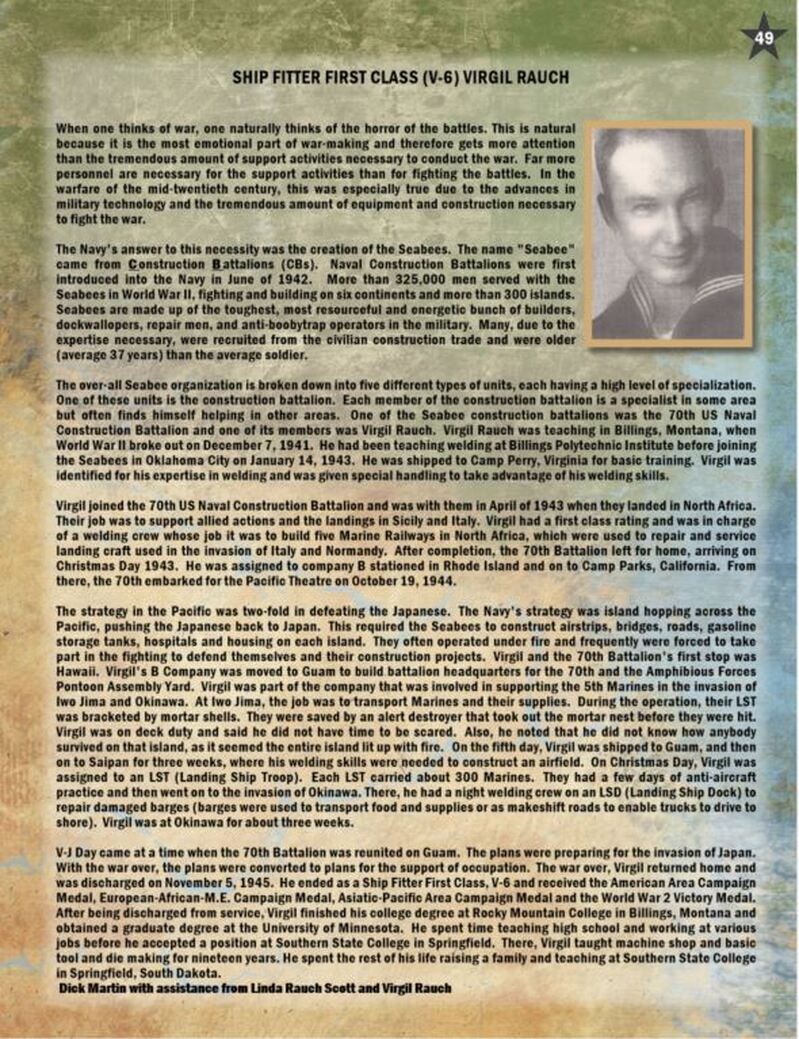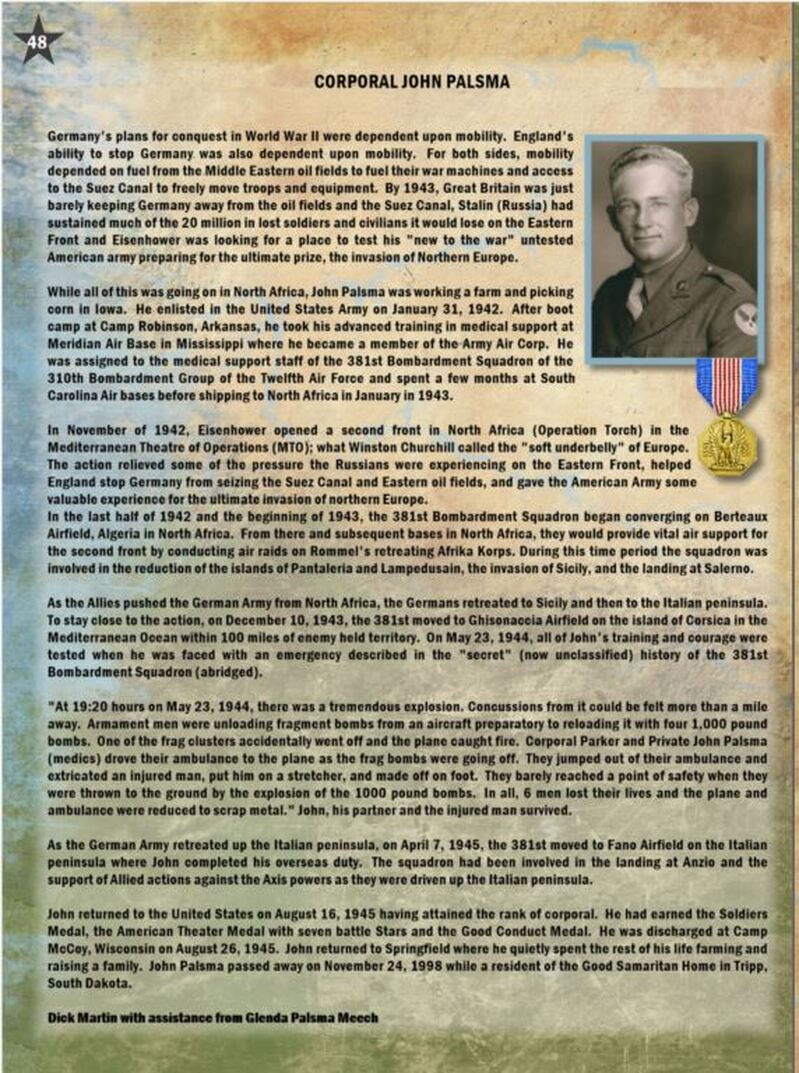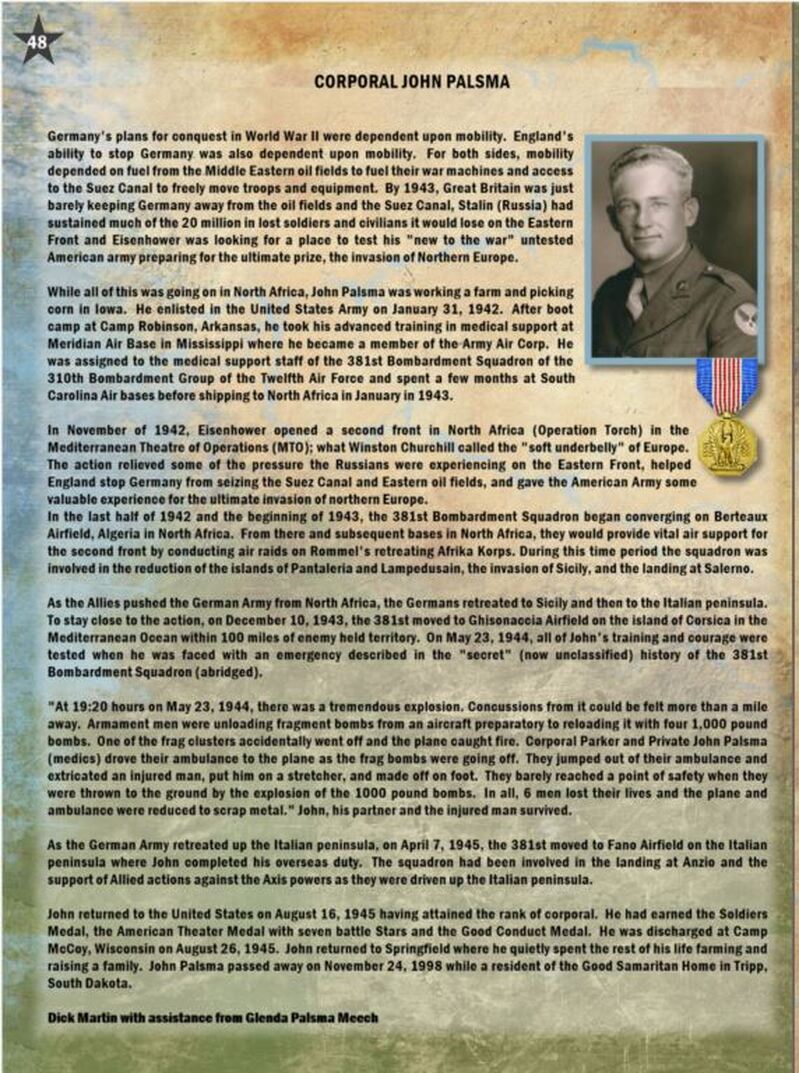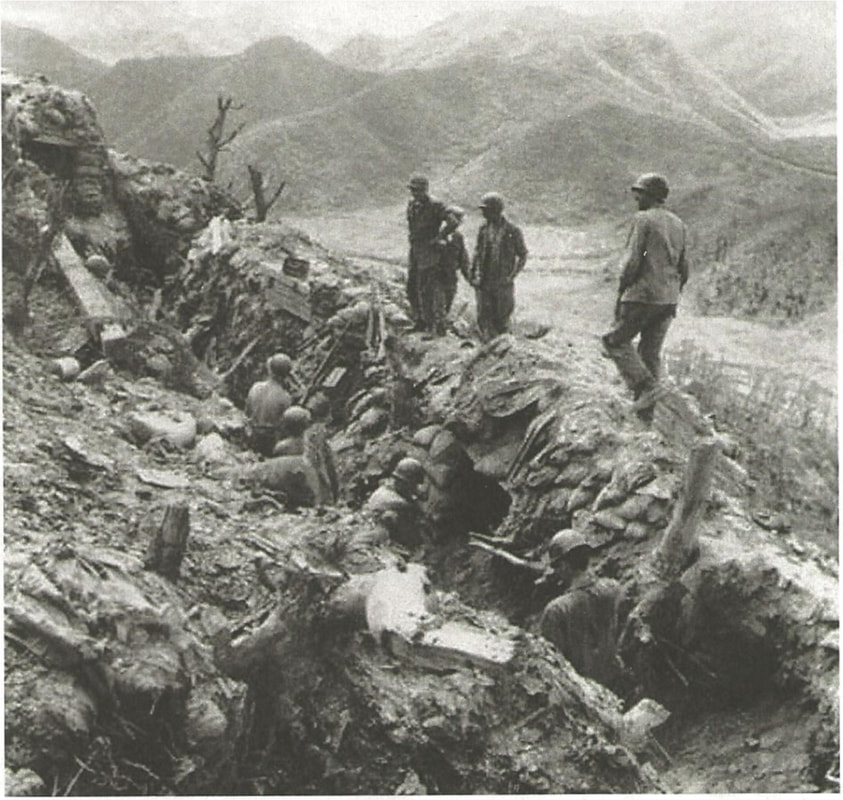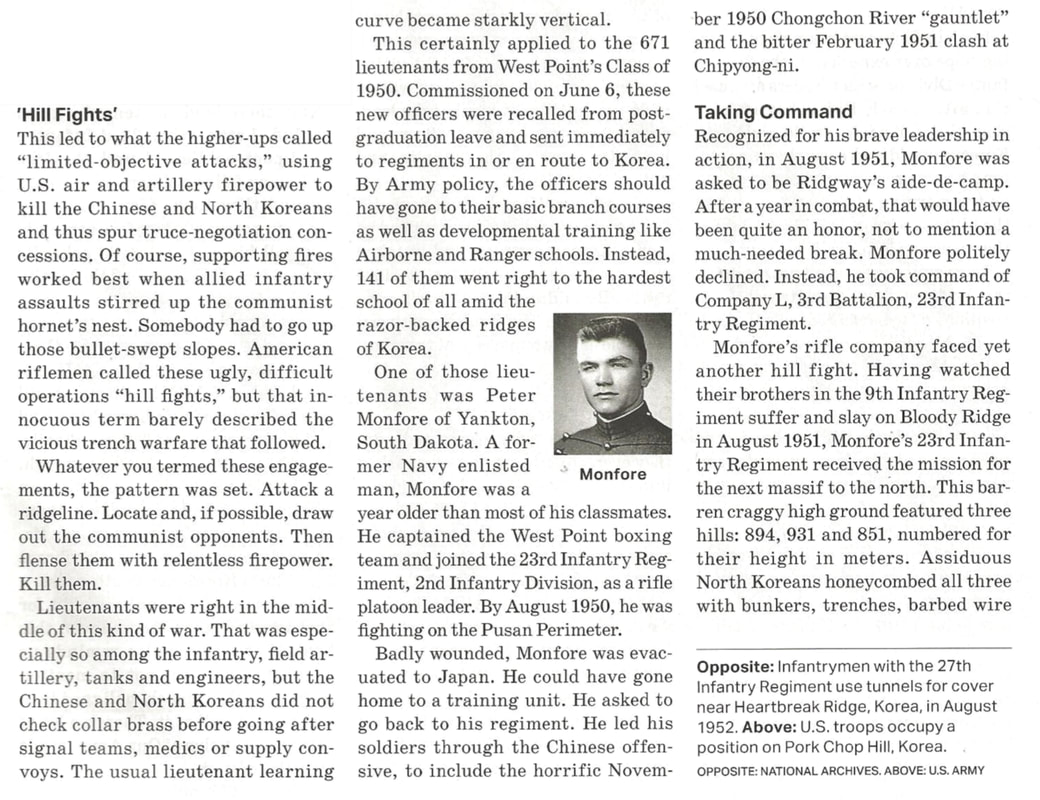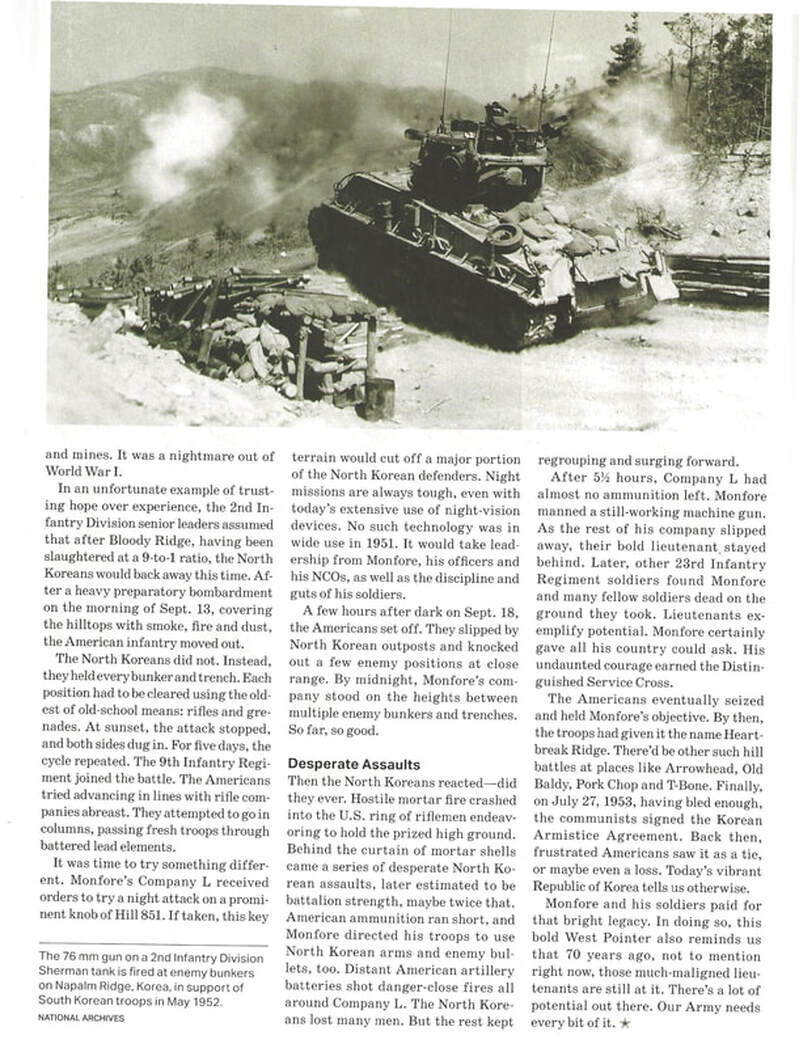|
I enjoy reading history, primarily military history. The more I read, the more I come to the conclusion that an argument could be made that in all of the wars we have been involved in, since the War of 1812, except perhaps Hitler in WWII, we could have avoided involvement in all of them with competent civilian and military leaders using good diplomacy. Consequently, I am writing a few essays to set out only why I believe that competent leadership could have kept us out of most, if not all, of the wars we have been involve in. It is not meant to denigrate, in any way, our conduct of the wars. That would be a much bigger project. Generally, the wars have been fought with unconditional terms as a goal which I agree with. I realize that hind-sight is 20/20 and it probably is not fair to judge our leaders when they did not have all the facts that history provides. Finally, “Ignorance is Bliss.” would be my excuse for any other of my errors in facts and/or judgments. WORLD WAR ONE By Dick Martin Part One - Excuse Me! Well, excuse me! But WW I (the Great War) has to be considered the stupidest of all of the American wars! In fact, except for WWII, I believe the cost in lives and treasure make all of the American wars since the War of 1812 unnecessary, impractical and immoral. WWI was fought to assuage big egos. From Churchill and Lord Mountbatten to George VI and Lord Kitchener, the civilian and military leadership on both sides lost controls of their egos and sent thousands of their youth to their slaughter in faraway places such as Gallipoli, Burma, and the Ottoman Empire. All the player’s egos played a significant role in the decision making to end the war. No statesman or military man had enough gravitas to end the slaughter, even if he wanted to. WWI is said to have eliminated the flower of England and Europe’s youth. The UK stood by and watched Winston Churchill send its youth to be slaughtered on the European as well as the Gallipoli peninsula. Gallipoli? Where in the hell is Gallipoli and why did Churchill think that it was important enough to sacrifice UK troops? Its only value was to control a non-essential waterway and satisfy Churchill’s ego. The Turks (Ottoman’s) proved that Churchill had greatly underestimated them. They sent Churchill’s UK soldiers back home with their tails between their legs. After attacking both sides of the peninsula and taking huge losses, the UK decided it wasn’t so important after all. Politically, Winston Churchill somehow survived this blunder. This may be the best example of out-of-control egos having a horrible effect on military affairs. You have to ask yourself; how did Winston Churchill survive Gallipoli and its 20,000 dead? I guess we should probably be glad that he did survive because of his role in WWII. WORLD WAR ONE By Dick Martin Part Two - Alliances WWI was a war fought by alliances: In one corner, were The Entente Powers led by the UK, France, Russia, Italy, Japan, and the United States (1917), and in the other corner, were The Central Powers led by Germany, the Ottoman empire Bulgaria, Austria-Hungary, and Serbia. In Sarajevo, the assassination of the Austrian Archduke Franz Ferdinand and his wife by a Serbian loser (Gavrilo Princip) lit the fuse that triggered the beginning of WWI. It was as if the Archduke and his wife wanted to be assassinated. After escaping death in the morning when a bomb was thrown at them, in an incredible act of stupidity, they left Sarajevo retracing the same route that had almost got them killed in the morning. Of course, Princip was patiently waiting for them at point blank range, giving him a second attempt at assassination. This time successful. Russia, Serbia, France, as well as the UK, who had an alliance with each other, were all drawn into WWI by the Archduke’s assassination. WWI, like all wars, lacked competent civilian leadership and an expectation of a short conflict; both of which would exacerbate the situation. Most of these short summaries were gleaned from three books:
A Peace to End All Peace by David Fromkin; Mountbatten by Philip Ziegler; and The First World War by Martin Gilbert
0 Comments
By Dick Martin 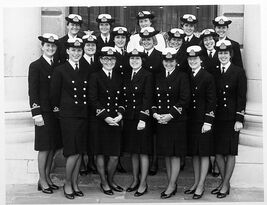 No, not the bird!! With all the WWII history I have read, I have never seen or heard the word Wrens referred to for women. I was introduced to them when they were mentioned in a Netflix documentary that extoled their part in WWII. The Women’s Royal Naval Service (WRNS: popularly and officially known as the Wrens) is probably equivalent to the US NAVY WAVES. The Wrens were formed in 1917 during the First World War. On October 10, 1918, nineteen-year-old Josephine Car from Cork became the first Wren to die on active service, when her ship, the RMS Leinster, was torpedoed. By the end of the war, the WRNS had 5,500 members, 500 of them officers. In addition, about 2,000 members of the WRAF had previously served with the WRNS supporting the Royal Naval Air Service and were transferred on the creation of the Royal Air Force. The Women’s Royal Naval Service (WRNS popularly and officially known as the WRENS) was the women’s branch of the United Kingdom’s Royal Navy. First formed in 1917 for the First World War, it was disbanded in 1919, then revived in 1939 at the beginning of the Second World War, remaining active until integrated into the Royal Navy in 1993. WRNS included cooks, clerks, wireless telegraphist, radar plotters, weapons analysts, range assessors, electricians and air mechanics. Wrens were prominent as support staff at the Government Code and Cypher at Bletchley Park as operators of the bombes and Colossus used to break codes and cyphers. At the beginning of the Second World War, Vera Laughton Mathews was appointed as the Director of the re-formed WRNS, the WRLNS, in 1939 with Ethel (Angela) Goodenough as her deputy. The WRNS had an expanded list of of allowable activities, including flying transport planes. At its peak, in 1944, it had 75,000 active service women. During the war, 102 WRNS members were killed in action and 22 wounded in action. One of the slogans used in recruitment posters was “Join the Wrens and free a man for the fleet”. The WRNS remained in existence after the end of the war, although Mathews retired in 1947 and Goodenough died the year before. In the 1970s, it became obvious that equal pay for women and the need to address sexual discrimination meant that the WRNS and the Royal Navy would become one organization. The key change was that women would become subject to the Naval Discipline Act 1957. Vonla McBride, who had experience in human resource management, became the Director of the WRNS in 1976. Members of the WRNS were subject to the same discipline as men by the next year. In October 1990, during the Gulf War, HMS Brilliant carried the first women officially to serve on an operational warship. That same year, Chief Officer Pippa Duncan became the first WRNS officer to command a Royal Navy shore establishment. The WRNS were finally integrated into the Royal Navy in 1993, when women were allowed to serve on board navy vessels as full members of the crew. Female sailors are still informally known by the nicknames “WRENS” and “Jennies” (Jenny Wrens”) in naval slang. Before 1993, all women in the Royal Navy were members of the WRNS except nurses. Nurses joined (and still join) Queen Alexandra’s Royal Naval Nursing Service , Medical and dental officers, who were commissioned directly into the Royal Navy, held RN ranks and wore WRNS uniform with gold RN insignia. By Dick Martin 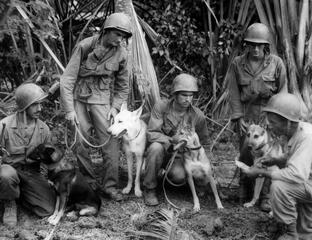 Now that horses have had their time in the sun as great contributors to the war effort during WWII, it is the dogs’ turn in the limelight as great military contributors. I have always said that dogs are God’s second greatest invention, grandchildren being His greatest. Soldiers would probably agree that dogs provide more than companionship, and there are many stories, especially coming out of the mid-east wars, of handlers being so attached to their dogs that they petitioned to take them home with them as pets. During WWII, nearly 20,000 US families donated their canine pets for military service through the Dogs for Defense program. Because of the demands of the war and due to deployments, many were no longer able to properly care for their pets. Initially the dogs were recruited and trained to patrol Atlantic Beaches, key industrial facilities and other places ripe for saboteurs. By July of 1942, the first hundred canine “volunteers” had proven their utility as sentries allowing them to expand their missions to scouts and messengers. Trained by the Quartermaster Corps, an army canine training manual was written in 1942 to facilitate the training of dogs. Some of the important names in the training of dogs for warfare were Ray Nosaka, Robert Coates, Len Brumby, Arthur Kilbon, William Prestre, and John Pearce. The handlers with their dogs-in-hand began their training at noon each day at Cat Island near Gulfport, Mississippi, learning to find the Japanese in fox holes and trees, alerting their handlers to the presence of enemy soldiers and attacking only when commanded. It seemed that the dogs worked better in packs than alone. The entire program had dismal results in accomplishing its goals. Consequently, after an Army review, the entire project was canceled. In the spring of 1943 with the army reinstating the program, the Quartermaster Corp took over management of the program. From experience, the Army, by 1944, had fine-tuned the list of most useful breeds to be German Shepherds, Doberman Pinscher, Belgian Sheepdogs, Collies, Giant Schnauzers, Siberian Huskies, Malamutes, and Eskimos dogs. They were trained to deliver messages and notes. Any dog that did not perform was dismissed from the program. From 1942 through 1945, nineteen thousand dogs were recruited, ten thousand four hundred of which completed training successfully. After all the training in warfare activities, the canine's most valuable contribution likely has been companionship. Taken mostly from an article “Dog Bait on Cat Island” by Jessica Wambach Brown found in the Spring of 2023 issue of World War II magazine. By Dick Martin An embarrassing feature of military service in Northern Europe during WWII not much talked about because of the consequences in affecting the readiness of our Armed Forces was R and R. (Rest and Recoup)
In the Southern Sector of the line basically defined by the Rhine River and the western boundary of Germany, the fighting seemed at a standstill in late 1944. This pause in the fighting came as a welcome break for the men of the 6th Army Group who had no way of knowing they were about to experience the fiercest fighting that they would confront thus far along the front. Consequently, the soldiers were ripe for a break and this seemed like a good time to take it. Hot showers, movies, recreation and, above all, sleep seemed to be the matter of the day. In addition, this was a time for those who used their passes for smooth liquor and rough women in Brussels and Paris. The lure of hot food pulled GIs into restaurants, where they wolfed down steaks, which were a great break from C Rations. All of the activities, no matter what the soldiers took part in, were called ‘R & R’ and usually started on a three-day furlough to Brussels or Paris. As anyone who spent time in a combat knows, ‘R&R’s involved carousing in bars and often taking part in their delights. These “Red light Districts” often made the rigors of combat endurable. Officer’s Clubs throughout Northern Europe were jammed and packed with officers of all ranks and all branches of the service also with all types of women from army nurses to French prostitutes. The scenery and costumes, when they had any on, were beautiful; for the most part the women in the show wore only a G-String or some feathers. It was a musical stage show featuring pretty girls and much bare flesh. However, too much of the leadership let their guard down and that meant the entire 6th Army et al being caught by surprise by Hitler’s Wehrmacht in the Ardennes Forest, what is known by the American Army as “The Battle of the Bulge.” It seems like a surety that when you have soldiers and combat, you also have R and R centers and all that goes with that. Paraphrased from chapter 6 of Peter Caaddock-Adams’ book, Fire and Steel by Dick Martin 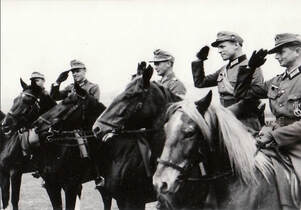 If you are lover of animals, especially horses, the following passage in the book I am currently reading “Fire and Steel” by Peter Caddick-Adams will probably bring a tear to your eye. It is a book that chronicles the end of WW2 in Europe. On page 159, he writes, “References to horses are often overlooked in accounts by both sides, where the presence of armor tends to blind both the writer and reader. For example, in the earlier Herbstnebel Ardennes offensive, the Wehrmacht had deployed 50,000 horses, a ratio of at least fifty equines for every panzer.” This may be surprising but 80% of the WWII German Army was horse drawn. Despite all the propaganda about Blitzkrieg, formidable German R&D, industrial design and production, the day-to-day mechanics of that fighting force involved an average of 1.1 million horses throughout the war. Of the 322 German divisions in the middle of the war (1943), only 52 were armored or motorized. One can be forgiven for thinking that a blitzkrieg army would be mostly tank driven. Can you imagine what it would take to feed 50,000 horses or more, depending on the size of the unit? The allies, by comparison, enjoyed the strategic advantage of the USA’s ability to mass produce motorized vehicles with low unit cost and rapid quantity production coupled with relatively easy access to fuel worldwide. The great bulk of the German combat strength, the old-type infantry marched to battle on foot with their weapons and supply trains propelled almost entirely by four-legged horsepower. The ratio was even greater in these spring battles, where with little fuel, military units (including the SS) relied more than ever on quadrupeds to tow their field artillery, ammunition, and numerous wagons full of supplies and equipment around the battlefield. A Marne Division officer recorded his thoughts on coming across a German horse-drawn column: “ ‘As far as we can see, the road is cluttered with shattered, twisted cars, trucks and wagons. Hundreds of horses have been caught in the barrage. They look at us with puzzled, unblaming eyes, whinnying softly as their torn flesh wait for life to drain from it. We are used to the sight of dead and wounded men, but these shuddering animals affect us strangely.’ His GI buddy added, ‘I’ve known horses all my life, and there’s not one dirty, mean thing about them. Makes you ashamed to belong to the human race.’ “ By Dick Martin No, it was not to down pheasants and other water fowl that can be found in abundance in places where the military finds itself. During the days of my stay in Korea, I had a pleasant daily walk from the BOQ to the Battalion Motor Pool and my office as Battalion Maintenance Officer. It was about a ten-minute noisy walk, replete with hundreds of cackling pheasants. Being from South Dakota but not an avid hunter, I relished the thought of telling my hunter-friends about my discovery. However, sometime during my experience in Korea, I learned that pheasants, as South Dakotans know them, are native to Korea. I was crushed that I would not be able to relate my discovery to my hunter-friends. First significant use of the shotgun goes back to the Civil War where, as the rule of the day, buck and shot ammunition was used by the soldiers in their smoothbore muskets. While he was a major in the Spanish-American War, John J. Pershing witnessed first-hand the devastation that shot guns wreaked upon the enemy. As a result, when General Pershing became commander of the American Expeditionary Force during WWI, he saw to it that his doughboys were armed with shotguns. The shotgun was most effective in point-blank combat found in the trenches of WW1, the jungles of the SW Pacific, the hordes of Chinese in Korea, and the jungles of Vietnam. Depending on the situation, shotguns were adapted to bayonet attachment, and interchangeable barrel lengths of 10,14 and 18 inches. The shotgun also came in an over-under version where the top could be an M16 gun and the bottom part a shotgun. The firearm fills a niche that traditional military weapons can’t. In the hands of a soldier, the shotgun can burst through doors and let loose a crushing array of multiple lead shot. Until the day there is no war, the shotguns persist as a permanent fixture in the army’s arsenal as well as on a rack on the rear window of hunter’s pickup trucks. Paraphrased from an article taken from Pages 40-42 on the December issue of Army Magazine entitled Blast from the Past by David McCormick. By Dick Martin In a previous military biography published in the Sunday Feature section on this site, we briefly told the story of a courageous young army junior officer from Springfield, Pete Momfore. We based our story on what we already knew about Lieutenant Monfore and the glowing comments garnered from junior and senior officers aware of Pete's character and his courageous exploits in the Korean war. However, we didn't know the specifics of Pete's time in Korea. For example, Pete was seriously wounded in 1950 and evacuated to Japan. After recovering from his wounds, Monfore could have returned home to a safe assignment with a training unit. Knowing of the quality of this junior officer, he was asked by General Ridgway to be his aide-de-camp, a very pretigious honor. Because he wanted to be with his frontline troops, he politely declined. If you have not read the previous biography of Pete Monfore, we suggest you do so before reading the below piece "New Officers Embody Long Legacy of Bravery" by Lt. Gen. Daniel Bolge found in the September issue of the Army magazine. After reading the two pieces, you should have a good idea of a young man whose qualities every young officer should aspire to emulate. By Dick Martin
|
Categories
All
Archives
October 2023
|
